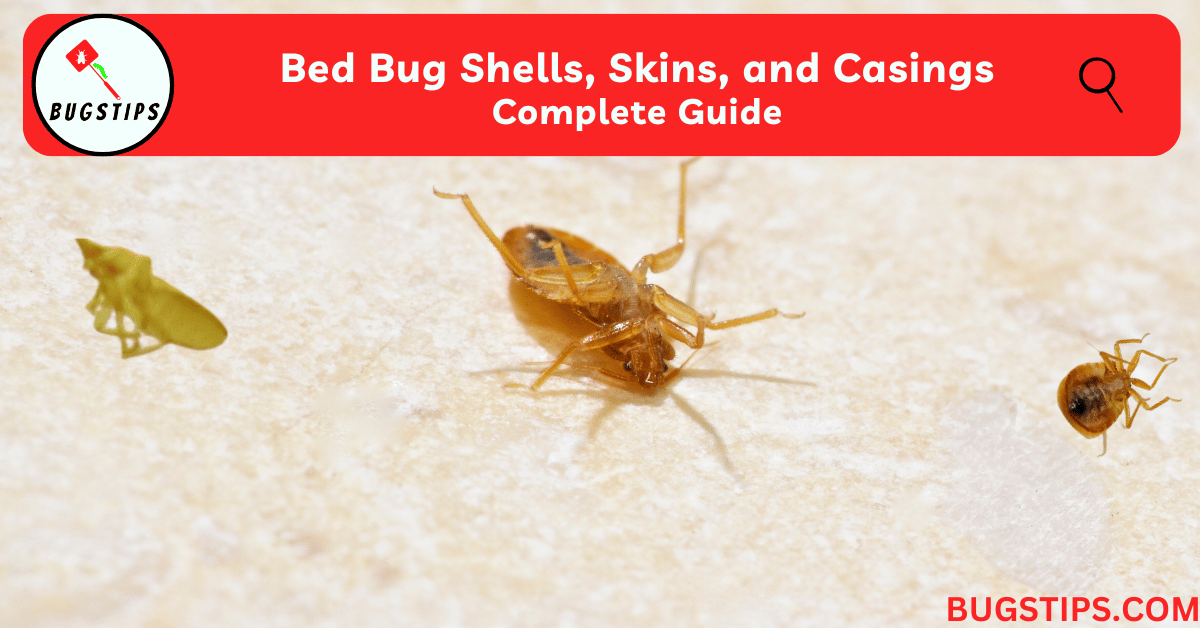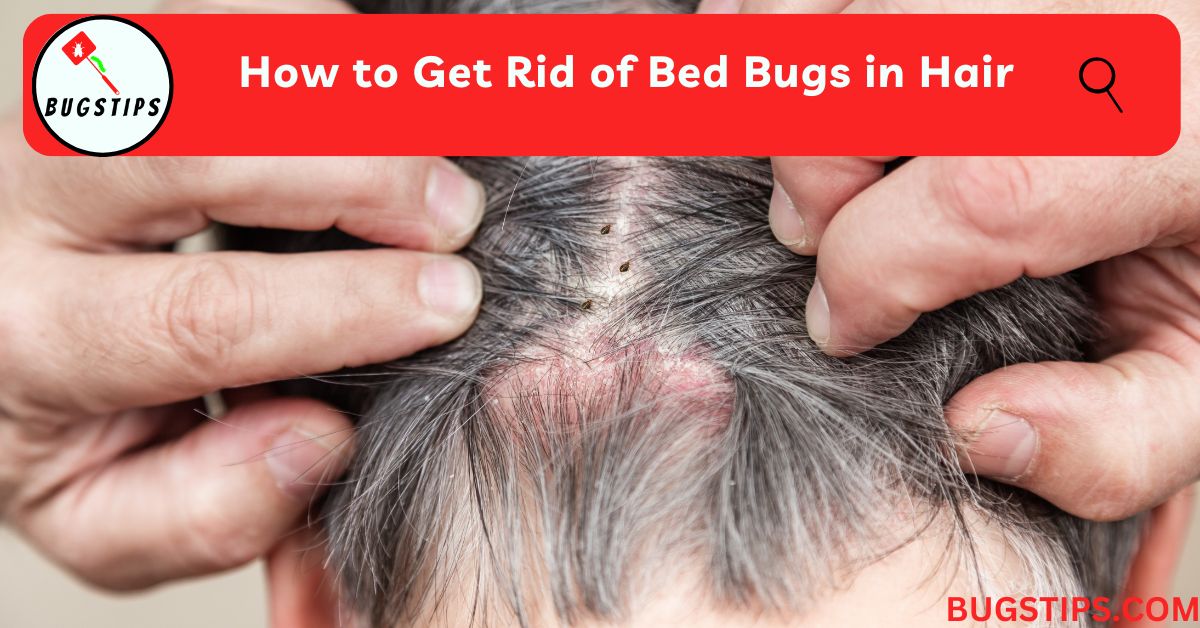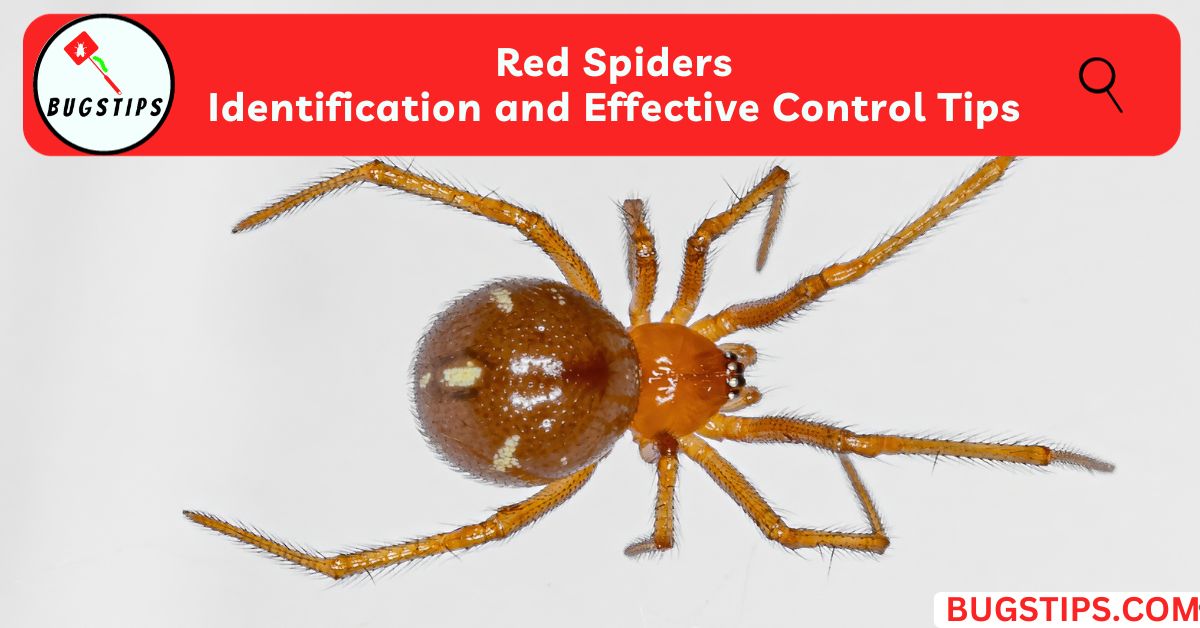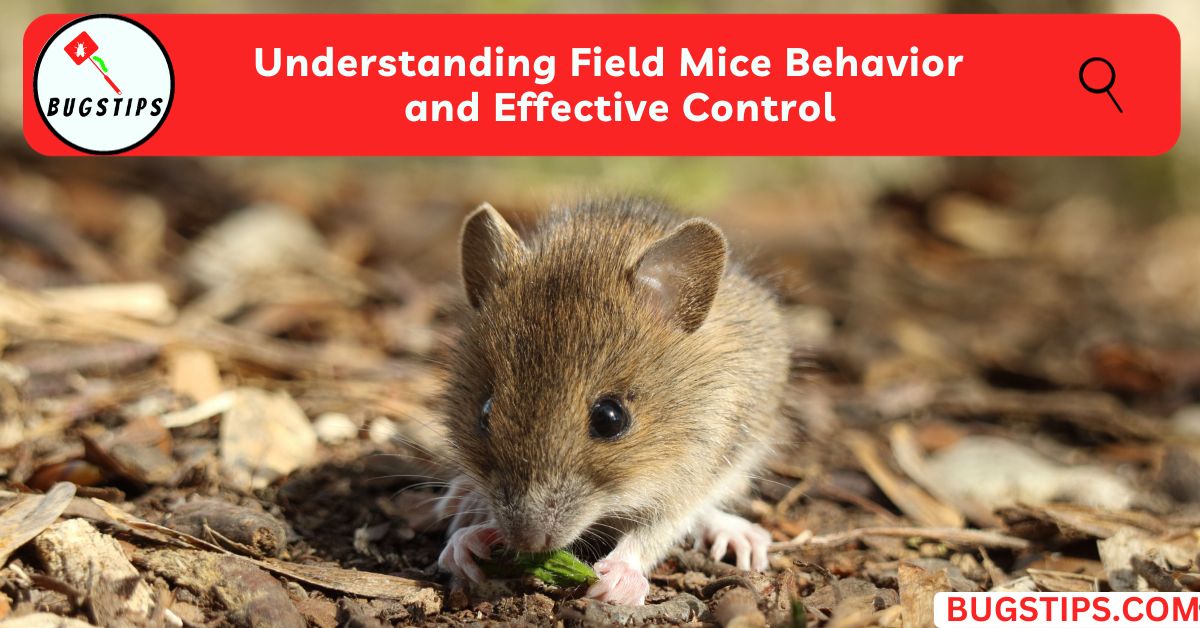This post may contain affiliate links which means as an Amazon Associate, this site may earn a small commission on qualified purchases made through links at no extra cost to you. Learn more on Affiliate Disclosure
Bed bugs are one of the most irritating pests that invade our homes, and they’re not only annoying but also unhygienic. These blood-sucking insects can cause a lot of trouble for homeowners.
Bed bugs are tiny insects that live on human blood and are usually found in bedrooms or anywhere that humans rest. If you suspect a bed bug infestation, you may notice Bed Bug Shells, Skins, and Casings.
In this article, we will discuss everything you need to know about Bed Bug Shells, Skins, and Casings.
What Are Bed Bug Shells?
Bed bug shells, also known as exoskeletons or molted skins, are the outer layer of a bed bug’s body that it sheds during its life cycle. As bed bugs grow and mature, they outgrow their current shell and must shed it to make room for a larger one.
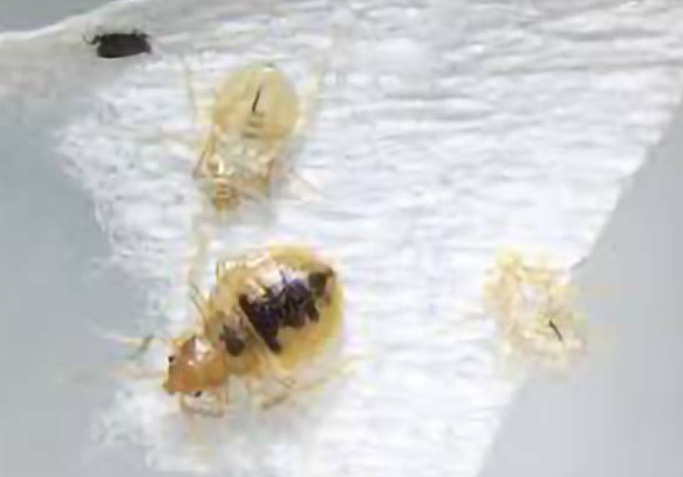
Bed bug shells are typically translucent and paper-thin, with a slightly crinkled appearance. They can range in color from a pale, milky white to a light brown depending on how recently the bed bug molted.
These shells are not living organisms and are no longer capable of feeding or reproducing. However, they can still be a sign of a bed bug infestation and should be taken seriously.
Related Article – Bed Bugs vs Scabies
It's important to note that bed bug shells are not the same as live bed bugs. While they may look similar, the shells are just the empty outer layer of the bug.
What Do Bed Bug Shells Look Like?

Bed bug shells can be easily mistaken for small, empty eggshells due to their shape and size. They are oval-shaped and measure about 1/4 inch long. However, unlike eggshells, they are thin and translucent exoskeletons that are left behind after the insect molts.
The color of bed bug shells can vary from a pale, milky white to a light tan color, depending on how long it has been since the bed bug molted. Newly molted bed bug shells tend to be more translucent and pale, while older shells can take on a slightly darker color due to oxidation.
While bed bug shells do not have a distinct smell, they can give off a musty odor if they have been left in place for a long time or if there is a large infestation present.
Do Bed Bugs Have Hard Shells or Soft Shells?
Bed bugs have hard shells that protect their bodies. The exoskeleton is made of a material called chitin, which is a tough, protective substance that provides support and protection for the insect. This hard shell is what allows bed bugs to withstand physical pressure and protect them from predators and environmental stressors.
Despite having a hard outer shell, bed bugs are still able to move around and navigate their environment with ease. They are incredibly resilient insects, and their hard shells are just one of the many ways that they have adapted to survive.
It’s worth noting that while the shell itself is hard, it can become more flexible when bed bugs are preparing to molt. During the molting process, bed bugs will shed their exoskeleton and form a new one. In the days leading up to the molt, the old shell will become more flexible to allow for the expansion of the bed bug’s body as it grows.
Can You Feel Bed Bug Shells?
While bed bug shells may look solid, they are actually very delicate and fragile. If you were to touch one, you would likely feel a slight crunch as it breaks under your fingers.
However, it is not recommended to touch or handle bed bug shells, as they can be a sign of an infestation and could potentially spread bed bugs or their eggs.
It’s important to note that while you may be able to feel the texture of a bed bug shell, they do not have any discernible odor.
This means that if you suspect you have bed bugs, simply smelling the area or any suspected shells will not confirm their presence. Proper identification through visual inspection is necessary to determine if bed bugs are present.
In addition to being delicate, bed bug shells are also lightweight and can easily be carried by air currents or attached to clothing and belongings.
Related Article – Found One Bed Bug But No Others?
Are Bed Bug Shells and Casings The Same Thing?
Many people ask whether bed bug shells and casings are the same thing, and it can be confusing to get a clear answer.
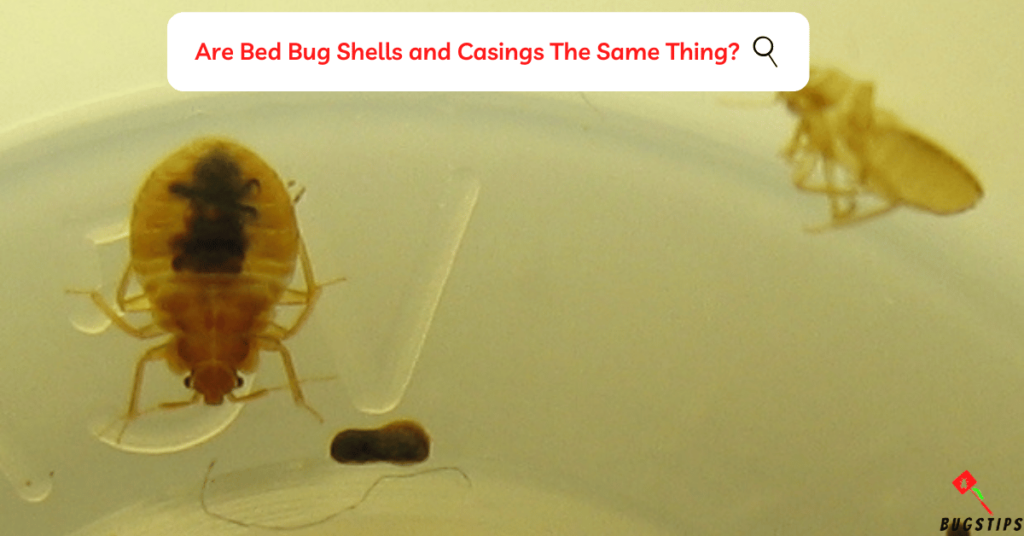
As pest control professionals, we can confirm that these two terms are often used interchangeably, but they actually refer to different things.
Bed bug shells are the exoskeletons that bed bugs shed as they grow and develop. These shells are left behind and can be found in areas where bed bugs have infested. They are usually thin, papery, and translucent or white in color when newly shed, and can range in color from tan to brown as they age.
On the other hand, bed bug casings are empty eggshells left behind after the insect hatches. These casings are smaller than the shells and are often found clustered together in groups. They are usually white or tan in color and have a similar shape to the shells.
While bed bug shells and casings are not the same thing, they can both be used as indicators of a bed bug infestation. If you find either of these items in your home, it's likely that there are bed bugs present.
| Bed Bug Shells | Bed Bug Casings |
|---|---|
| Exoskeletons that bed bugs shed during molting | Empty eggshells left behind after bed bug hatches |
| Larger than casings | Smaller than shells |
| Tan to brown in color | White or tan in color |
| Indicate presence of bed bugs | Indicate potential infestation, but not harmful |
| Can be found in areas where bed bugs have infested | Often found clustered together in groups |
Baby Bed Bug Shells vs. Adult Bed Bug Shells
Baby bed bug shells may look similar to adult bed bug shells, but there are some key differences between the two.
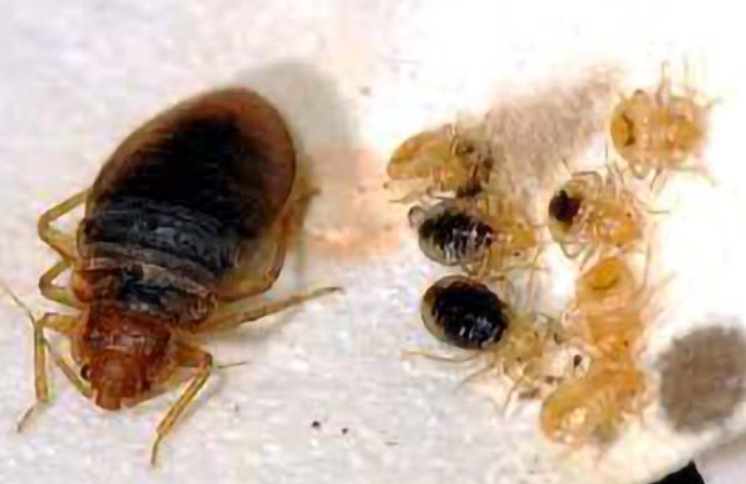
As baby bed bugs, also known as nymphs, grow and mature into adults, they undergo several molts, shedding their exoskeleton or outer shell during each of these stages. These discarded shells are left behind and can be found in areas where bed bugs have infested.
One of the main differences between baby and adult bed bug shells is their size. Baby bed bug shells are smaller in size, measuring around 1 mm in length, while adult bed bug shells can be up to 7 mm in length. This size difference can be useful in identifying the life stage of the bed bug, as well as determining the severity of the infestation.
Related Article – Baby Bed Bugs: 10 Facts You Need to See (with Pictures!)
Another difference between baby and adult bed bug shells is their color. Baby bed bug shells are often lighter in color and more translucent, making them harder to spot. As they mature and become adult bed bugs, their shells may darken in color, ranging from a light tan to a deep brown or black.
Despite these differences, it can still be difficult to distinguish between baby and adult bed bug shells without a magnifying glass or other tools.
| Feature | Baby Bed Bug Shells | Adult Bed Bug Shells |
|---|---|---|
| Size | Around 1 mm | Up to 7 mm |
| Color | Lighter and more translucent | Can range from light tan to deep brown or black |
| Appearance | Similar to adult shells, but smaller | Similar to baby shells, but larger and darker in color |
| Importance | Can be harder to spot and distinguish from other debris | Can be easier to spot and indicate a more established infestation |
Why Bed Bugs Shed Their Skin?
Bed bugs are known for their ability to shed their skin or exoskeleton as they grow and mature. This process is called molting, and it is an essential part of their development.
During molting, bed bugs shed their outer shell, which is known as an exoskeleton. This allows them to grow and expand their bodies to accommodate their increasing size. After molting, the bed bug’s new exoskeleton is soft and pliable, but it will soon harden and become rigid.
There are several reasons why bed bugs shed their skin. One of the main reasons is that it allows them to grow and mature into adults. As they shed their skin, they are able to expand their bodies and develop new features, such as wings or reproductive organs.
Bed bugs also shed their skin to get rid of parasites or other unwanted hitchhikers. When a bed bug becomes infested with parasites, such as mites or ticks, it will shed its skin to get rid of them.
How Often Do Bed Bugs Shed Their Skin?
Bed bugs shed their skin, or molt, several times during their life cycle as they grow and develop into adults. The frequency of molting depends on several factors, including the availability of food, temperature, and humidity levels.
In ideal conditions, such as a temperature of around 80°F and humidity levels of 70-80%, bed bugs can molt every 5-10 days. However, if conditions are less favorable, molting may occur less frequently, taking up to several weeks between each molt.
It’s important to note that bed bugs require a blood meal before each molt, so if a bed bug is unable to feed, it will not be able to molt and may die. Additionally, if a bed bug is disturbed or exposed to insecticides, it may delay molting or even prevent it altogether.
Understanding the frequency of bed bug molting can help in the detection and treatment of an infestation.
You’ll Also Like – Found One Bed Bug But No Others?
How Long Does It Take for a Bed Bug to Shed Its Skin?
The molting process for bed bugs is an important part of their growth and development into adulthood. Each stage of molting usually lasts about a week, but this timeframe can be prolonged if the nymphs do not have a host to feed on.
In general, young bed bugs will spend approximately 35 to 48 days shedding their shells as they progress through the five nymphal stages. During this time, they will molt multiple times, shedding their exoskeletons and leaving behind empty shells or casings.
It is worth noting that even without a blood meal, bed bugs can survive for up to 400 days, making them resilient pests that can be difficult to eradicate. This ability to survive without feeding allows them to wait out periods of dormancy and find new hosts to feed on when they become available.
How Long Do Bed Bug Shells, Skins, and Casings Last?
After bed bugs molt, they leave behind their exoskeletons, also known as shells or skins. These shells and skins can last for a long time, as they do not decompose easily.
In fact, these shed exoskeletons can last for several months to over a year, depending on the environmental conditions. The shells and casings are made up of chitin, which is a tough and durable material that can resist decomposition.
In dry conditions, such as in a heated home, bed bug shells and skins can last for many months. However, in moist conditions or when exposed to sunlight, the shells and skins may decompose more quickly. Humidity can be a significant factor in the lifespan of bed bug shells, skins, and casings. Higher levels of humidity can cause them to break down more quickly, while lower levels can extend their lifespan.
How to Find Bed Bug Shells?
If you suspect a bed bug infestation in your home, it’s essential to know where to look for evidence of these pesky insects. One telltale sign of a bed bug infestation is the presence of their shed skins, shells, and casings.
Bed bugs often hide in cracks and crevices near their human or animal hosts, and this is where you are likely to find their shed skins or casings. So here are some common places to look for bed bug casings
- Mattresses and box springs: Carefully inspect the seams, tufts, and folds of your mattresses and box springs. Look for small, papery, translucent shells or casings that may be a light brown or yellowish color.
- Bed frames and headboards: Check the cracks and crevices of your bed frames and headboards, especially near where the mattress sits. Bed bug shells and casings may be visible in these areas.
Related Article – Bed Bugs in Upholstered Headboard
- Furniture: Examine the seams, cracks, and crevices of your upholstered furniture, such as couches and chairs. Use a flashlight to help spot small, papery, translucent shells or casings.
- Baseboards and moldings: Look for bed bug shells and casings in the cracks and crevices of your baseboards, moldings, and other wall fixtures. A credit card or similar object can help you scrape along these areas to dislodge any hiding bed bug shells or casings.
- Electrical outlets and switch plates: Take off the faceplates of your electrical outlets and switch plates to look for bed bug shells and casings that may be hiding in the crevices.
Related Article – Bed Bugs in Electronics
- Luggage and backpacks: If you’ve traveled recently or suspect bed bugs may have hitched a ride into your home, carefully examine the seams and pockets of your luggage and backpacks. Look for small, papery, translucent shells or casings that may be a light brown or yellowish color.
It's important to note that bed bugs can be challenging to find, even when you know where to look. They are small and adept at hiding in tight spaces. A thorough inspection of your home, including all of the above areas, may be necessary to find evidence of an infestation.
What Does It Mean When You Find a Bed Bug Shell?
If you find a bed bug shell or casing in your home, it’s a strong indication that there may be a bed bug infestation present. Bed bugs shed their skins as they grow and mature, so the presence of shed skins or casings means that bed bugs have been in the area recently.
However, finding a bed bug shell on its own does not necessarily mean that there is an active infestation, as the shell may be from a previous infestation that has since been eliminated.
It’s important to thoroughly inspect your home and look for other signs of bed bugs, such as live bugs, fecal stains, or blood spots on bedding, to confirm the presence of an infestation.
How to Remove Bed Bug Shells and Casings
If you’ve found bed bug shells and casings in your home, it’s important to remove them promptly to help prevent a potential infestation. Here are the steps to properly remove bed bug shells and casings:

Vacuum the affected area
Vacuuming is an effective way to remove bed bug shells, skins, and casings from your home. Use a vacuum with a crevice tool and brush attachment to thoroughly clean the affected areas, including mattresses, box springs, bed frames, headboards, furniture, and baseboards.
Be sure to pay extra attention to cracks and crevices where bed bugs and their shed skins may be hiding. After vacuuming, immediately dispose of the vacuum bag or empty the canister into a sealed plastic bag and dispose of it in an outdoor trash can.
Regular vacuuming is an important part of preventing and controlling bed bug infestations, as it can help to remove any eggs, nymphs, or adult bugs that may be present in your home.
Use a stiff brush or putty knife
After vacuuming the affected area, use a stiff brush or putty knife to scrape any remaining bed bug shells and casings off surfaces. Use the brush or putty knife to carefully scrape along seams, cracks, and crevices where bed bugs may have been hiding.
To use the stiff brush, simply apply firm pressure and brush back and forth along the affected area. Use a putty knife to gently scrape off any remaining shells or casings.
Be sure to dispose of any collected bed bug debris in a sealed plastic bag to prevent re-infestation.
Dispose of the debris
After vacuuming and removing as much debris as possible, it is important to properly dispose of the debris. Place the debris into a plastic bag and seal it tightly. This will help prevent any bed bugs or eggs from escaping and spreading to other areas.
Be sure to dispose of the bag in an outdoor trash bin, away from your home. Do not leave the bag in your home, as this can result in bed bugs re-infesting your space.
It is important to use proper disposal methods to prevent the spread of bed bugs to other areas of your home or to others.
Use boiling water
Using boiling water can be an effective method to remove bed bug shells and casings. Bed bugs and their eggs cannot survive high temperatures, making boiling water a natural and chemical-free solution to eliminate them.
To wash your mattress and box springs with boiling water, follow these steps:
- Remove all bedding, including sheets, pillowcases, and comforters, from your mattress and box springs.
- Fill a large kettle or pot with water and bring it to a boil.
- Carefully pour the boiling water over the surface of your mattress and box springs, being sure to cover the entire surface.
- Use a clean cloth or sponge to scrub the surface of your mattress and box springs, focusing on areas where bed bugs may be hiding, such as seams, tufts, and folds.
- Allow the mattress and box springs to air dry completely before replacing the bedding and using them again.
Note: Be cautious when using boiling water to clean your mattress and box springs, as it can cause damage or discoloration to some materials. It's always a good idea to test a small, inconspicuous area first before treating the entire surface.
Use insecticides
Using insecticides can be an effective way to get rid of bed bugs and their shells. However, it’s important to use caution and follow the manufacturer’s instructions carefully when using any insecticide.
Look for a product that is specifically labeled for use against bed bugs and follow the instructions for application.
When using insecticides, it’s important to focus on the areas where you have seen bed bug shells and casings, as well as any areas where bed bugs are likely to hide, such as cracks and crevices.
Be sure to wear gloves and a mask when applying insecticides, and keep children and pets away from the treated area until it is dry.
Related Article – When You Should Call an Exterminator For Bed Bugs
It's also important to note that insecticides alone may not be enough to fully eliminate a bed bug infestation. A professional pest control service may be necessary to completely eradicate the problem.
Is it Normal to Find Bed Bug Shells After Treatment?
It is not unusual to find bed bug shells or casings after treatment. In fact, finding these remnants is a good sign that the treatment is working. The shells can be left behind even after the bed bugs themselves have been killed.
It is important to note that finding bed bug shells does not necessarily mean that there are still live bed bugs present. However, it is possible for some bed bugs to survive treatment and continue to reproduce. This is why it is important to continue monitoring for signs of bed bugs even after treatment.
If you continue to find bed bug shells or live bed bugs after treatment, it may be necessary to repeat the treatment or try a different approach. It is also possible that the infestation was not completely eliminated, to begin with, and may require additional treatments.
In general, it is recommended to continue monitoring for bed bugs for at least a few weeks after treatment. This can include inspecting for bed bug shells, live bed bugs, and any new bites or signs of bed bug activity. With persistence and a comprehensive approach to treatment, it is possible to fully eliminate a bed bug infestation.
Other Insects Molt Their Casings Beside Bed Bugs
It’s possible that you may come across other insect casings in your home, or perhaps you’re just curious about which other insects molt their casings. Here are some other insects that molt their casings:
- Cockroaches: Like bed bugs, cockroaches are also pests that are known to hide in cracks and crevices. After molting, they leave behind their exoskeletons or shed skins, which look similar to bed bug shells.
- Carpet beetles: These insects are commonly found in carpets and other fabrics. After molting, they leave behind their larval skins, which can be mistaken for bed bug shells.
- Spiders: Spiders are not pests, but they can still leave their shed skins around your home. Their skins are usually found near their webs or hiding spots.
- Crickets: Like bed bugs, crickets also shed their skins as they grow. You may find their shed skins in areas where they congregate, such as basements, garages, or sheds.
- Termites: Termites shed their skins as they mature and grow. Their casings may resemble small white or cream-colored oval shapes, and can often be found near termite nests or damaged wood.
- Ants: Ants go through a similar process of molting their casings as they grow. You may find their shed skins near ant colonies or areas where they frequently travel.
- Dragonflies: Dragonflies go through multiple molts as they mature from larvae to adults. Their shed skins may be found near bodies of water or in other damp areas.
- Lice: Lice are small, wingless insects that feed on blood. Like bed bugs, they shed their skins as they grow. You may find their shed skins on bedding, clothing, or other fabrics.
- Grasshoppers: Grasshoppers also shed their skins as they grow. You may find their shed skins in areas where they congregate, such as fields, meadows, or gardens.
- House centipedes: These insects are known for their long, spindly legs and are commonly found in damp areas of the home. After molting, they leave behind their exoskeletons, which can look similar to bed bug shells.
Final Thoughts
Finding bed bug shells is not uncommon, especially after treatment. Properly removing bed bug shells and casings is an important step in preventing a bed bug infestation in your home. By following the steps outlined in this article, you can effectively remove any bed bug shells or casings you find and help prevent a bed bug infestation from taking hold.
It’s also worth noting that other insects can leave behind similar casings, so it’s important to correctly identify the pest you’re dealing with. By knowing what to look for, you can identify the source of the casings and take appropriate action.
Remember to regularly inspect your home for bed bug shells and casings. With these tips, you can effectively deal with any dead bed bug shells, bed bug molted shells, or bed bug casings in your home.
FAQs
Can Bed Bug Shells, and Casings Cause Allergies?
Yes, bed bug shells and casings can cause allergies in some people. Bed bug shells and casings contain a protein called “chitin” which can trigger allergic reactions in some individuals.
What color are bed bug casings?
Bed bug casings are usually white or beige in color, and can sometimes be a lighter tan or straw color.
Do bed bugs leave black shells?
No, bed bugs do not leave black shells. Bed bug shells and casings are typically white or beige in color.
What color are bed bug eggshells?
Bed bug egg shells are usually pearl-white in color.
Why did I only find one bedbug shell?
It’s possible that you only found a one-bed bug shell because it was left behind by a single bed bug, or because it was the only shell that had not been cleaned up by previous efforts to eliminate bed bugs in your home.
Are bed bug egg shells hard?
Yes, bed bug egg shells are hard and have a smooth surface.
Can bed bug shells hatch into new bed bugs?
No, bed bug shells cannot hatch into new bed bugs. Bed bug shells are simply the molted exoskeletons of bed bugs.
Can bed bug shells, skins, and casings move on their own?
No, bed bug shells, skins, and casings cannot move on their own. They are lifeless objects left behind by bed bugs.
Resources – (for further reading)
University of Kentucky – Bed Bugs – UK Entomology
National Library of Medicine – The Potential of Insects as Alternative Sources of Chitin
Pennsylvania State University – Biology, Habitat, and Management of Bed Bugs
U.S. Environmental Protection Agency – How to Find Bed Bugs

